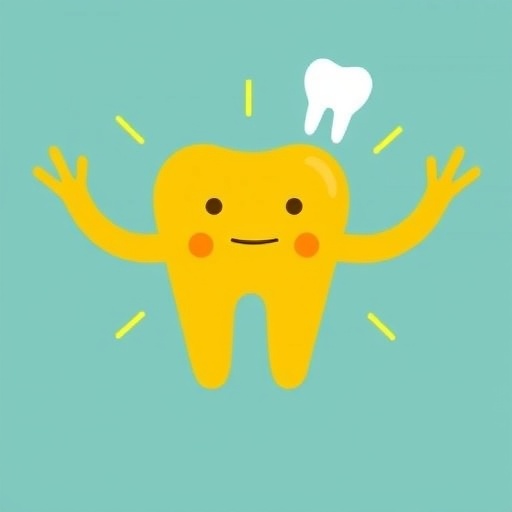A recent comprehensive study led by researchers at New York University’s College of Dentistry has shed new light on the pervasive nature of dental fear in the United States, revealing that nearly three out of four adults experience some degree of anxiety or fear when faced with dental visits. Published in the prestigious Journal of the American Dental Association, this study overturns previous assumptions about the prevalence of dental fear, pointing to an even broader and more urgent public health concern than once recognized.
Historically, research on dental fear indicated that approximately a quarter of the population harbored significant anxieties regarding dental care. However, many of these earlier studies were limited by sample size, outdated methodologies, and changing societal attitudes toward healthcare. The NYU-led investigation employed a census-matched survey methodology engaging 1,003 adults, carefully calibrated for demographic variables including age, gender, race, education, region, and income status. This rigorous approach ensures that findings accurately reflect contemporary reality.
The results are striking: 72.6% of participants reported some level of dental fear, with nearly half claiming moderate levels of anxiety and a substantial 26.8% enduring severe fear. Such pervasive discomfort is not merely a psychological challenge but represents a tangible barrier to regular oral healthcare, with repercussions that extend beyond dental hygiene to affect overall health status.
Dental fear often traps individuals in a destructive cycle, wherein anxiety prompts avoidance of routine cleanings and maintenance care. Subsequently, minor dental issues can escalate into painful, emergency situations necessitating invasive treatments that only deepen fear and distrust in dental professionals. This cycle compounds both the emotional burden and the physiological consequences of untreated oral disease, augmenting the complexity of therapeutic interventions.
Despite the daunting statistics, the study offers hope. Among those reporting moderate to severe dental fear, a robust majority—more than 71%—expressed an openness to brief, accessible treatments designed to alleviate their anxiety. Intriguingly, this interest remained high even when the proposed interventions involved self-administered therapies that could be conducted at home, signaling a readiness for innovative, scalable solutions.
One promising avenue emerging from this research is the application of cognitive behavioral therapy (CBT) and mindfulness techniques delivered through digital platforms. The NYU team has developed “Dental FearLess,” an integrated program that utilizes a smartphone app supplemented by telehealth-guided one-on-one sessions when necessary. Preliminary pilot studies demonstrate remarkable effectiveness, with half of participants no longer harboring fear after completing the intervention.
The potential for digital therapeutics to overcome geographic, economic, and social barriers is transformative. By leveraging mobile technology and virtual communication, these treatments can reach diverse populations previously neglected due to lack of local specialists or stigma associated with seeking psychological help for dental anxiety.
Beyond treatment, the research deeply probes the origins and maintenance of dental fear. Memory emerges as a crucial, yet underexplored, factor. Investigators emphasize how vivid, traumatic recollections of dental experiences—often originating in childhood—exert a profound influence on adult fears and behaviors. Such memories frequently encapsulate instances of pain, perceived disrespect, and breaches of trust, which can imprint enduring psychological scars.
In particular, some recollected practices, such as forcibly covering a child’s mouth to prevent disruptive behavior, have been abandoned in contemporary clinical guidelines precisely because of their harmful psychological legacy. Additionally, patients report feelings of humiliation or being dismissed during dental appointments, fueling skepticism toward dental care and fostering reluctance to maintain oral health.
Understanding these memory-based dimensions of dental fear has direct implications for clinical practice. Experts advocate for enhanced provider training focused on compassionate communication, transparency, and patient-centered care, which can mitigate the re-traumatization of vulnerable individuals. Recognizing the narrative context of fear allows clinicians to build trust and foster partnerships that encourage adherence to preventive care.
Collaborative efforts in this investigation spanned a multidisciplinary team from NYU Dentistry, integrating expertise from oral health policy, clinical psychology, and pediatric dentistry. The study also benefited from partnerships with the Brooker Memorial Institute Pediatric Dental Center and was supported by the National Institute of Dental and Craniofacial Research under the NIH umbrella, underscoring the significance and rigor of this research endeavor.
This renewed understanding of dental fear not only outlines the extent of the problem but illuminates practical pathways to redress it. From virtual therapy innovations to a paradigm shift in patient-practitioner interactions, these findings advocate a comprehensive, empathetic response to a widespread public health challenge that has long been underestimated.
Dr. Richard Heyman, the study’s lead investigator, stresses the importance of expanding training for dental professionals to include psychological approaches and the integration of telehealth platforms to broaden access. These pioneering methods promise to decouple fear from dental care, enabling millions to embrace routine oral health maintenance and thereby improve their overall quality of life.
In sum, this study presents both a wake-up call and a beacon of hope. It confirms that dental fear is not only endemic but potentially growing, yet it simultaneously highlights innovative, empirically supported interventions capable of transforming patient experiences. As these findings gain traction among clinicians and public health decision-makers, a future with less fear and better oral health for the American public appears increasingly attainable.
Subject of Research: People
Article Title: A census-matched survey of dental fear and fear-treatment interest in the United States
News Publication Date: 2-Sep-2025
Web References:
- https://doi.org/10.1016/j.adaj.2025.07.004
- https://www.dentalfearless.org/
- https://onlinelibrary.wiley.com/doi/abs/10.1111/jphd.12598
- https://www.mdpi.com/2673-6373/5/3/65
References:
Heyman, R., Daly, K., Aladia, S., Harris, S., Roitman, N., Kim, A., Smith Slep, A. (2025). A census-matched survey of dental fear and fear-treatment interest in the United States. Journal of the American Dental Association. National Institute of Dental and Craniofacial Research (UH3DE029453).
Daly, K., Ochshorn, J., Lipnitsky, R., Rozbicka, A., Athilat, S., Baker, S., Pike, A. (2025). The role of memory in dental fear: Insights from parental reflections. Oral.
Keywords: Dentistry, Dental care, Psychological science, Clinical psychology, Fear, Anxiety, Memory




